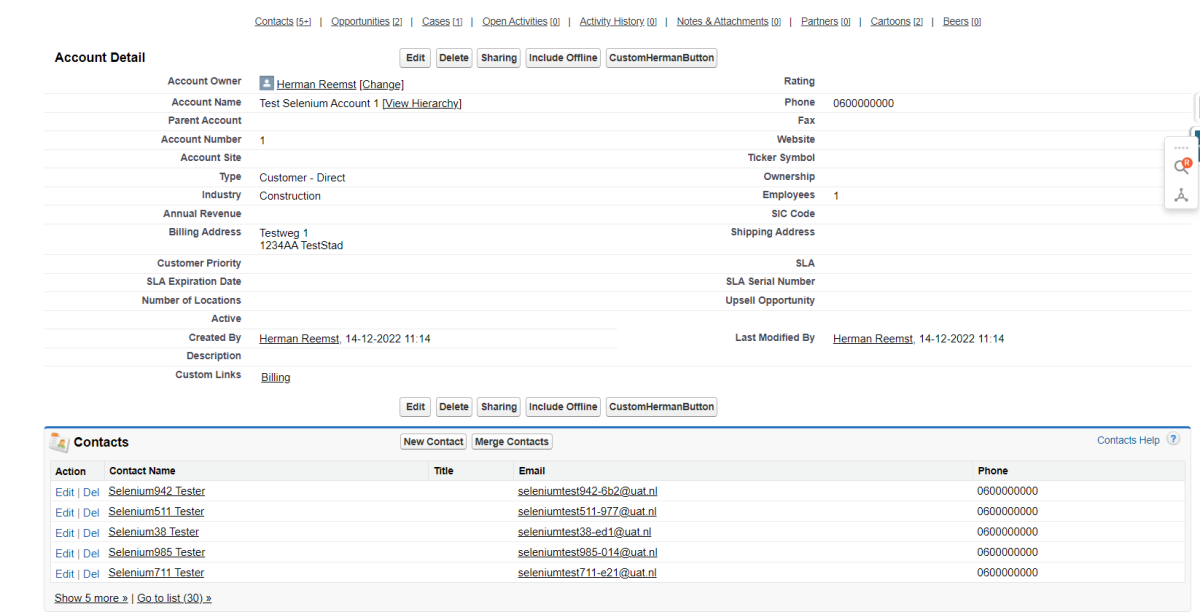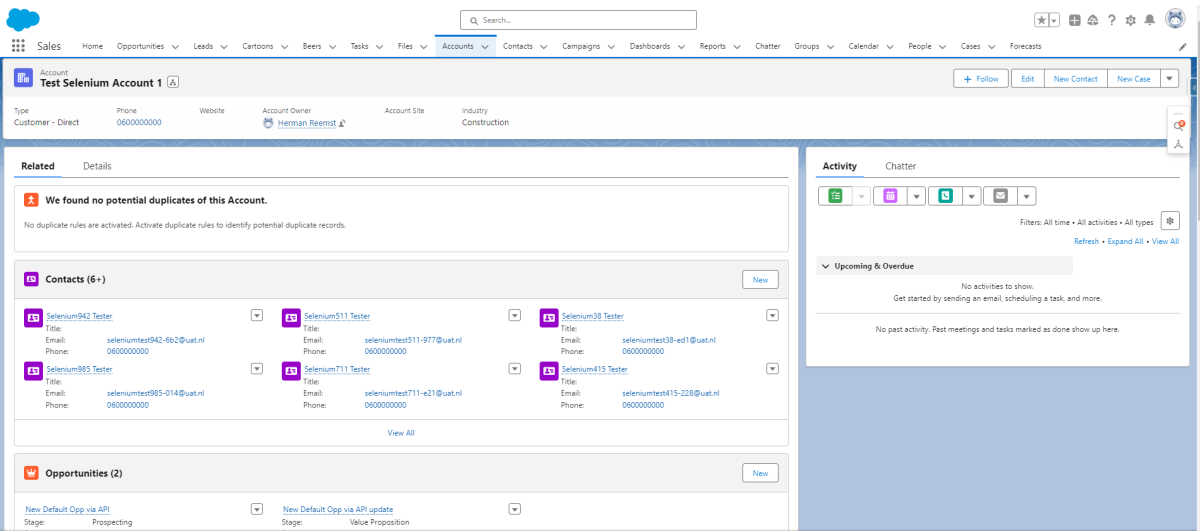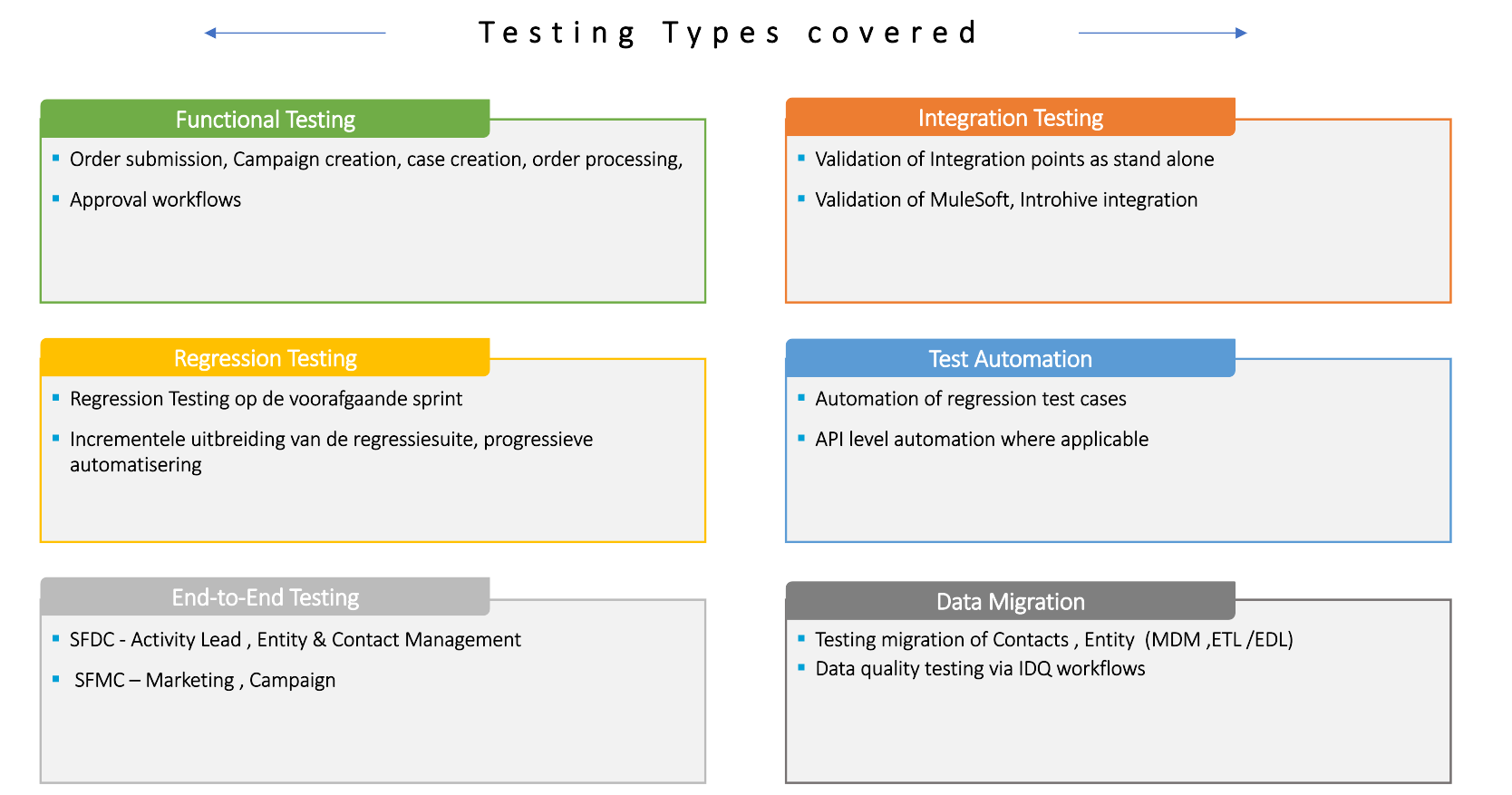One key aspect of quality engineering in Salesforce is ensuring functional integrity. Quality engineers meticulously verify that all functionalities, from the Salesforce Graphical User Interface (GUI) to complex Salesforce Setup configurations, perform flawlessly. By examining flows, business rules, and user management settings in detail, they uncover potential anomalies and ensure smooth user interactions.
Furthermore, quality engineers need to understand the differences between the Salesforce Classic and Lightning interfaces. They extensively test and validate various components, buttons, checkboxes, toggles, and navigation methods specific to each interface. This ensures consistent and user-friendly experiences, regardless of the interface used.
Salesforce Classic:

|
Salesforce Lightning:

|
Salesforce's high level of customization introduces additional complexity. Quality engineers acknowledge that custom objects tailored to each organization's unique needs can complicate testing. Therefore, they design and execute test scenarios that cover a wide range of standard and custom objects, ensuring comprehensive coverage and identifying potential issues specific to the organization's implementation.
Quality engineering in Salesforce relies on various testing techniques
When it comes to ensuring the quality and reliability of Salesforce systems, manual testing plays a crucial role. However, to achieve the highest level of quality, it is essential to employ a combination of testing techniques that address various aspects of the system. This includes approaches such as static testing, regression testing, and exploratory testing, each bringing unique benefits to the testing process. By combining these techniques, testers can ensure comprehensive coverage and identify potential issues before they impact the user experience. Let's delve deeper into the importance of these functional testing techniques and how they contribute to the reliability and functionality of Salesforce applications.
The following testing types are covered:
- Functional Testing covers all pages, processes, workflows and other Salesforce related objects in the Org.
- Integration testing is one of the most important aspects of Salesforce functional testing to validate the interaction between Salesforce and external systems or other applications. As there are different sandboxes used for different purposes, there should be a dedicated sandbox where all the integrations are available. It’s also an option to add stubs/service virtualization on the sandbox to simulate the target systems.
- Regression testing is another critical aspect of functional testing. It involves retesting the system to ensure that previously developed and tested functionalities still work as expected after new changes or updates have been implemented. As Salesforce applications evolve and new features are added, regression testing helps maintain the integrity of the existing functionalities. By retesting critical scenarios, regression testing ensures that changes do not introduce unintended side effects or break previously functioning components.
- Test Automation is covered on a separate page. <read more>
- End-to-End Testing in Salesforce means that you need to test the complete flow or process from start to finish, not restricted to Salesforce itself. Other target systems can be part of the End-to-End test.
- Data Migration can happen when organizations move from a different CRM to Salesforce, but also within Salesforce itself. This can be achieved by API testing or Database Testing. The developer console can also take care of importing and exporting data, besides the Salesforce Setup.

Besides the testing types, there are a couple of test techniques which can be useful for testing Salesforce:
- Path testing and process cycle testing thoroughly examine critical flows and processes using different input and output combinations.
- Decision Table testing provides comprehensive coverage by testing different scenarios with varying conditions and actions.
- Data combination testing helps validate scenarios with diverse input combinations and their corresponding expected results.
- Syntactic and Semantic testing ensures the accuracy and robustness of the Salesforce application, addressing elements such as input/output validation, button functionality, color consistency, and textual accuracy.
In addition to these systematic approaches, quality engineers also employ exploratory testing to intuitively explore the Salesforce application. Exploratory testing relies on the tester's knowledge, experience, and creativity. It involves actively exploring the system, interacting with different functionalities, and uncovering potential issues that may not be captured by predefined test cases. Exploratory testing allows testers to take on the role of an end-user and simulate real-world scenarios, providing valuable insights into the system's usability, performance, and overall user experience.
To complement these testing techniques, quality engineers use static testing methods such as checklists and validation of requirements, code, and functional descriptions. This technique focuses on identifying defects, inconsistencies, and potential risks in the early stages of the development process. By carefully reviewing these artifacts, testers can ensure that the system's foundation is solid and aligns with the intended functionality. Static testing helps eliminate defects and discrepancies before they manifest during the dynamic testing phase.
Building Blocks
Quality Engineering within Salesforce
Quality Assurance
Automated Testing
People involved
Artifacts
Related wiki's
Look and feel
Automation pitfalls
Architecture and Releases
SuccessFactors explained